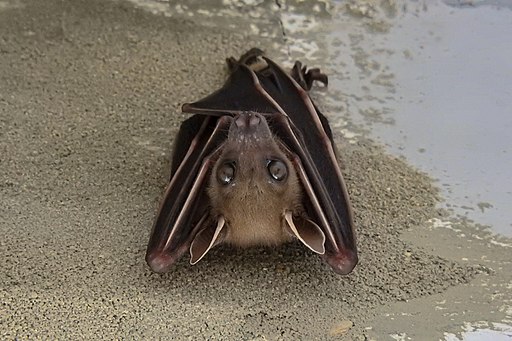
It was a warm July evening, and we left the living room window open so the cats could lounge in the screened in porch. As usual, my teenage son went to bed around midnight, hours after I had turned in.
At 1:30am I heard a frantic chittering noise from behind his closed door. He was calling out from under his covers while a panicked bat circled above, looking for a way out of the small room.
Son safely out, window open, bat perching on the window frame looking beady-eyed but adorable, we closed the room off to let the bat find its way out overnight. That’s when the rabies-related googling began, and I started on some dodgy, middle-of-the-night statistical reasoning.
Let me share what I learned: If a child is sleeping in a room where a bat is found, you are to consider that they may have been bitten or scratched. That’s what the 24-hour nursing service and the local public health page said. However, there was no indication of contact—no bite marks or memory of a touch. On the other hand, the bat’s sudden distress might have been caused by an encounter. In other words, it was very hard to tell whether I was worrying about a complete non-event.
Something else to understand is that rabies is not part of our current reality here. Worldwide, Lyssavirus, named after the Greek spirit of rage and madness, causes about 60,000 deaths every year. Almost all of those result from a bite from a stray dog, after which the virus creeps along nerve cells, traveling a couple of centimeters per day until it reaches the central nervous system. Once that happens it’s either fatal (almost always) or devastatingly disabling. But the last human case in my own province happened in the Year of Our Lord 1967. Was I not only worried about a complete non-event, but also about a disease that hadn’t infected anyone since long before the birth of my own middle age self?
Rabies’ near-eradication in these parts is no accident: the government has a successful baiting program in which, beyond giving regular shots to household pets, they airdrop immunized meat into the wilderness. As a result, rabies in terrestrial animals has gone down 99%. Recent exceptions involve outbreaks from raccoons coming up from the States, public health differences between our two nations extending, apparently, to urban scavengers.
Rabies was a vague specter in my childhood when I spent weeks in a tent every summer. We were taught that bears would likely be scared of us, but that foam at the mouth meant they could be rabidly aggressive. Our imagined escapes involved fleeing into the lake, since rabid animals are hydrophobic. The idea of becoming specifically scared of water fascinates me, still. What would that feel like? How could a virus effect such a specific phobia in order to avoid becoming diluted?
Bats cannot be baited in the same way, so they comprise the last remaining threat of rabies in this area. You can send in a bat for testing, and often that’s done because they’re flying weird or dragging themselves along the ground. Even those suspect bats are rabid in less than 5% of cases, which would suggest that the base rate could be less than 1%.
Sure enough, our doctor’s office the next day told us that shots are no longer advised for bats in bedrooms. In other words, they won’t pay for it anymore. But we could still buy them if we were worried. And to soothe a dread some of us have been harboring since childhood, just know that a massive needle to the stomach is no longer the done thing—we’re just talking four regular jabs and an initial one in any wound site that might be harboring the traveling virus.
The best way to prevent transmission turns out to be immediate washing with soap (and a general shower with soap if you don’t have a specific mark). We made our decision and put it out of our minds until last week, when the fickle nature of statistics and probabilities reared its head.
A bat in cottage country put someone in hospital with rabies last week. After almost sixty years in the clear, our province now has to reset the board to ‘Zero days since last accident’.
Image: Paramanu Sarkar via Wikimedia Commons